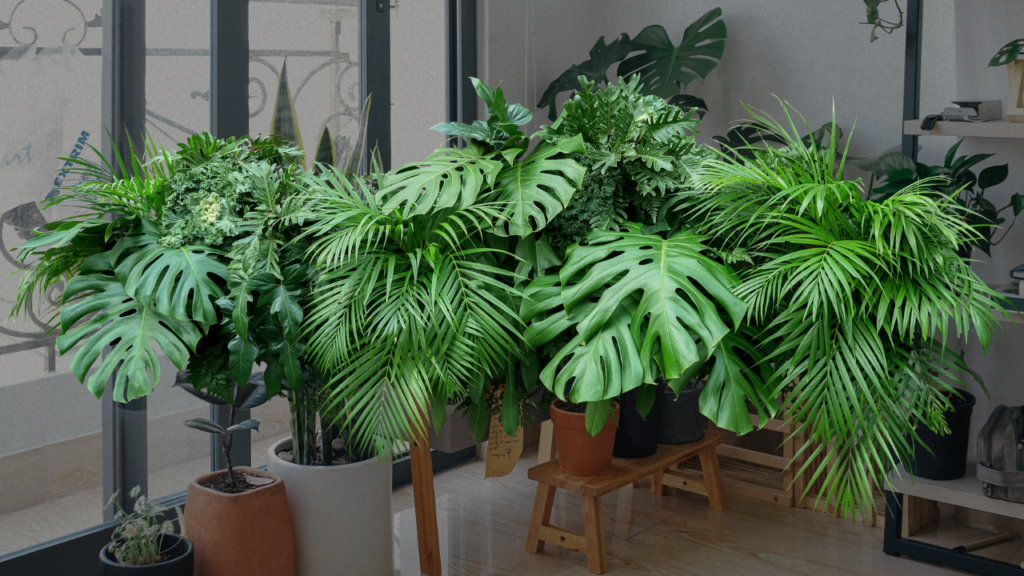Monstera plants, affectionately known as the “Swiss cheese plant” due to their unique fenestrated leaves, have become a favorite among indoor plant enthusiasts. Dive into our comprehensive guide to ensure your Monstera flourishes!
| Monstera Quick Reference | |
|---|---|
| Attribute | Information |
| 🍀Common Names | Monstera, Swiss Cheese Plant, Split-leaf Philodendron |
| 🌿Botanical Name | Monstera deliciosa |
| 🍃Family | Araceae |
| 🌾Plant Type | Evergreen perennial |
| 📏Mature Size | Up to 9-15 ft. in natural habitat, typically smaller indoors |
| ☀️Sun Exposure | Bright, indirect light |
| 🌍Soil Type | Peat-based potting mix |
| ⚖️Soil pH | Slightly acidic |
| 🌼Bloom Time | Rarely blooms indoors |
| 🎨Flower Color | White spathe with a spadix (though rarely seen) |
| ❄️Hardiness Zones | 10-12 (USDA) |
| 🌎Native Area | Southern Mexico, south to Panama |
1. Introduction:
- Origin: Monsteras are evergreen tropical vines and shrubs native to Central America. They are renowned for their natural leaf-holes, leading to their nickname, Swiss Cheese Plant.
- Fenestrations: The holes in Monstera leaves, known as fenestrations, are believed to maximize sun fleck capture on the forest floor.
2. Sunlight:
- Acclimation: Monsteras thrive in bright to medium indirect light. They can be acclimated to tolerate direct sun but are not naturally suited for it.
3. Watering:
- Filtered Water: Monsteras can benefit from filtered water or water left out overnight before using.
4. Humidity:
- Boosting Humidity: While normal room humidity is adequate, Monsteras prefer more humid conditions. Consider using a fine-mist mister or a humidifier.
5. Temperature:
- Optimal Range: Monsteras prefer temperatures between 65°F-85°F (18°C-30°C). Avoid letting the temperature drop below 60°F (15°C).
6. Soil:
- Aeration: Use a well-draining potting mix and consider adding ingredients like perlite or lava rocks for better aeration.
7. Common Problems:
- Brown and Crispy Edges: This indicates the plant is thirsty, underwatered, or there’s a high salt build-up.
- Wilting with Dry Soil: The plant is underwatered or pot-bound.
- Yellow Leaves with Wet Soil: The plant is overwatered.
8. Precautions:
- Toxicity: Monsteras can be irritating if consumed. It’s best to keep them out of reach of pets and small children.
9. Varieties:
- Monstera Deliciosa vs. Monstera Adansonii: While both are popular as houseplants, M. adansonii has longer, tapering leaves with enclosed leaf holes. M. deliciosa’s leaf holes grow towards the edge and open up as they mature.
10. Historical Context:
- Discovery: Monsteras, like many aroids, were formally introduced to the botanical world in the early 20th century. However, they were known to the indigenous peoples of Central America long before that.
In Conclusion: With the right care and attention, your Monstera will not only survive but thrive, becoming a beautiful centerpiece in your space. Enjoy the lush, tropical ambiance it brings to your home or office!
Additional Tips:
- Rotate Regularly: Turn your Monstera every few weeks for even growth.
- Yellow Leaves Alert: This might indicate overwatering. Adjust your routine if you spot them.
- Pet Safety: Monsteras are toxic to pets. Keep them at a safe distance from your furry friends.
In Conclusion: With the right care and attention, your Monstera will not only survive but thrive, becoming a beautiful centerpiece in your space. Enjoy the lush, tropical ambiance it brings to your home or office!
